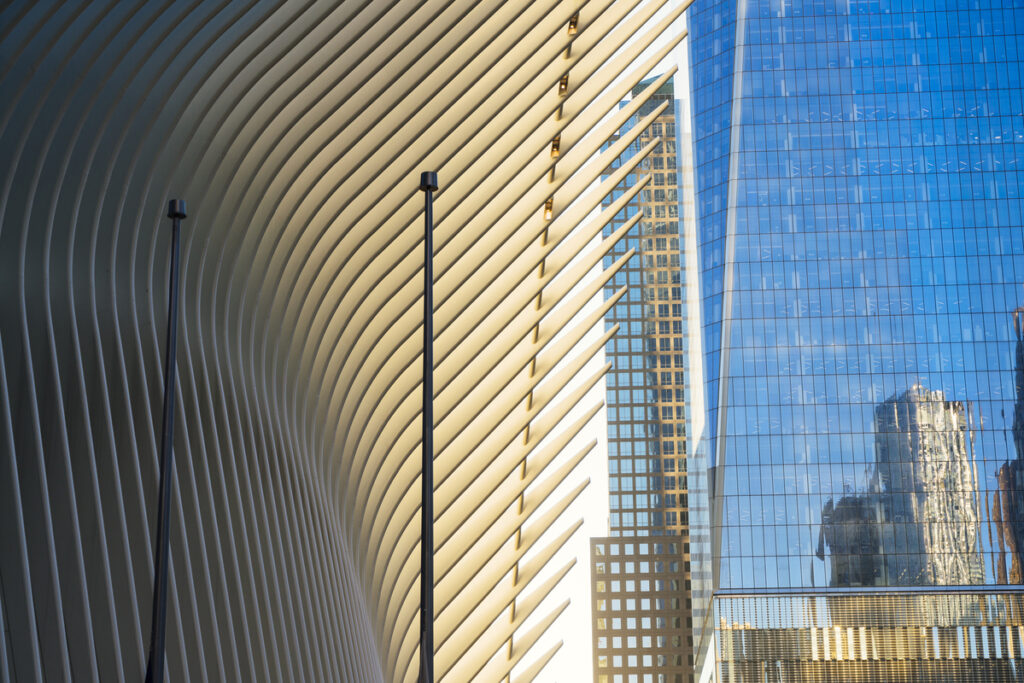In the dynamic world of architecture, Canada stands as a beacon of innovation and creativity, boasting a vibrant community of talented firms that shape the built environment with their visionary designs. From coast to coast, architects across the country are redefining the boundaries of possibility, crafting spaces that inspire, uplift, and enrich the lives of those who inhabit them.
According to the Number of A+Awards Winners, Number of A+Awards Finalists, Featured Projects, and Total Projects these architecture firms in Canada have been chosen. The Canadian architectural landscape is thriving, with a notable increase in the number of award-winning projects and finalists in prestigious competitions. In the past decade alone, Canadian firms have garnered numerous accolades, showcasing their prowess on both national and international stages. For instance, firms like Omar Gandhi Architects, MGA | Michael Green Architecture, and Lemay have received widespread recognition for their groundbreaking designs, solidifying Canada’s position as a global leader in architectural innovation.
As the architectural industry continues to evolve, driven by advancements in technology, sustainability, and social consciousness, Canadian architects are at the forefront of these transformative changes. With a deep-rooted commitment to excellence and a passion for pushing the boundaries of design, they are poised to shape the future of the built environment in profound ways.
In this comprehensive overview, we will delve into the diverse landscape of Canadian architecture, exploring the work of ten prominent firms that exemplify the nation’s architectural prowess. From their philosophies and design approaches to their notable projects and future outlook, we will uncover the essence of Canadian architecture and its impact on the world stage. Join us on this journey as we celebrate the ingenuity, creativity, and innovation of Canadian architects, and envision the possibilities that lie ahead in shaping our built environment.
Table of Contents
Top Architecture Firms in Canada
Canada boasts a rich architectural landscape with firms that have made significant contributions to the field both nationally and internationally. These firms are known for their innovative designs, sustainable practices, and commitment to enhancing the built environment. Here are some of the top architecture firms in Canada:
1. Omar Gandhi Architects
Number of A+Awards Winners: 2
Number of A+Awards Finalists: 1
Featured Projects: 25
Total Projects: 28
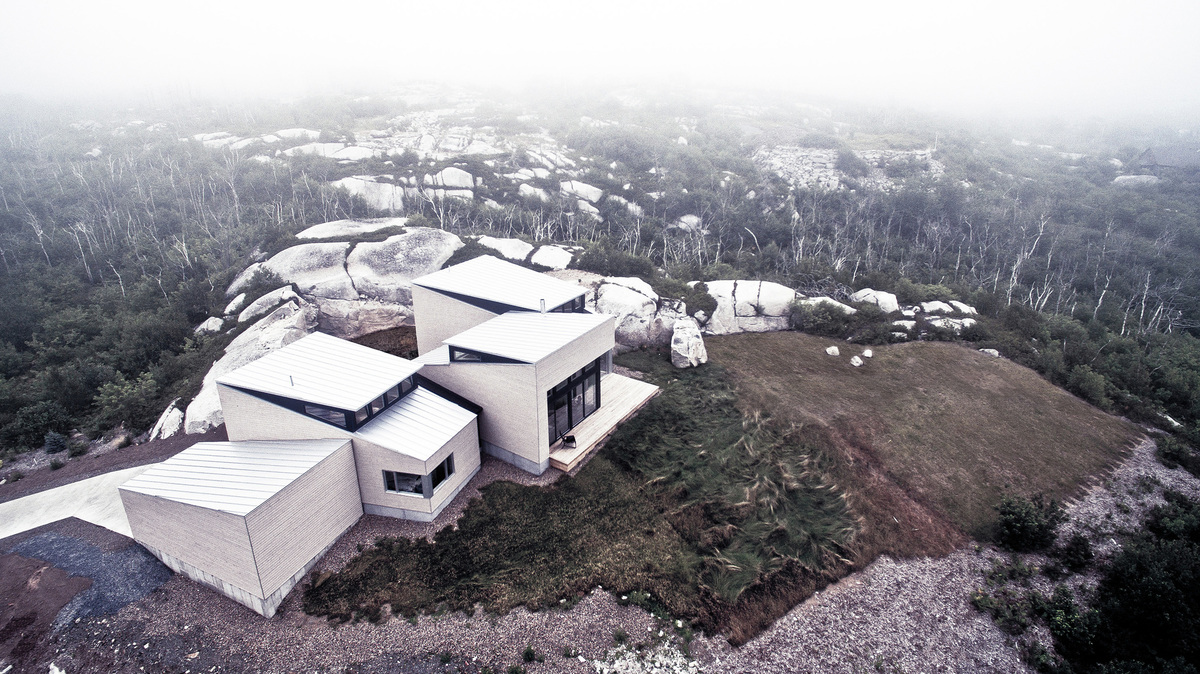
Omar Gandhi Architect, an Architecture Firms in Canada, operates from cozy studios in Halifax, Nova Scotia, and Toronto, Ontario. Focused on bespoke, contemporary designs, OG prioritizes establishing personal connections with clients, ensuring designs resonate with their lifestyles.
Renowned for their innovative approach, Omar Gandhi Architects has spearheaded numerous notable projects, including:
OG House, Halifax, Canada – Nestled in the lively, historic North End of Halifax, Nova Scotia, OG House occupies a narrow, once-forgotten lot. The neighboring property once housed a cherished African Nova Scotian barbershop, steeped in community history.
Initially intended as the primary residence for Omar Gandhi, his partner, and son, the project evolved to accommodate the expansion of Omar Gandhi Architect’s east coast headquarters. The ground-floor office transitioned into a community studio, fostering local initiatives such as housing for the homeless and enhancing public amenities in the North End of Halifax.
Prime Seafood Palace, Toronto, Canada – Positioned in the heart of vibrant West Queen West, Prime Seafood Palace (PSP) offers a culinary retreat amidst Toronto’s bustling urban landscape.
PSP is envisioned as a luminous wood sanctuary, enveloping an unassuming brick structure, seamlessly integrating into the cityscape. Reflecting the meticulous craftsmanship synonymous with Omar Gandhi Architect’s residential projects, PSP embodies a refined commercial endeavor.
Black Gables, Sydney, Canada – Black Gables stands as a pair of sleek, jet-black gabled buildings with metal roofs, nestled in Sydney, Canada. Designed for Jonah Samson, a respected local physician, artist, and collector, these structures serve as both a living space and an art studio.
Positioned at unique angles to optimize scenic views and natural light, Black Gables exude a sense of playful composition. These modest yet striking buildings reflect a harmonious blend of functionality and aesthetic appeal.
Float, Halifax, Canada – Nestled within the captivating terrain of Halifax’s Purcell’s Cove “backlands,” Float residence draws inspiration from the rugged, jagged bedrock formations scattered throughout the landscape. The architectural concept mirrors the appearance of a sizable bedrock mass (outcrop) that has undergone a geological shift, resulting in a displaced fragment (subcrop or float). Clad in grey washed wood, the exterior façade mimics the stratified layers of bedrock, offering a visual testament to the dynamic movements of subcrop.
Sluice Point, Yarmouth, Canada – Situated on the southernmost tip of Nova Scotia in Yarmouth County’s Argyle Municipality, Sluice Point commands sweeping vistas of marshlands, serene islands, and the Tusket River’s tranquil waters. Amidst a landscape dotted with modest cottages, the design approach prioritizes reverence for the surroundings. Embracing a low, elongated profile, the building harmonizes with the natural topography, while a palette of indigenous materials seamlessly integrates it into the scenic backdrop.
2. ACDF Architecture
Number of A+Awards Winners: 1
Number of A+Awards Finalists: 8
Featured Projects: 17
Total Projects: 37
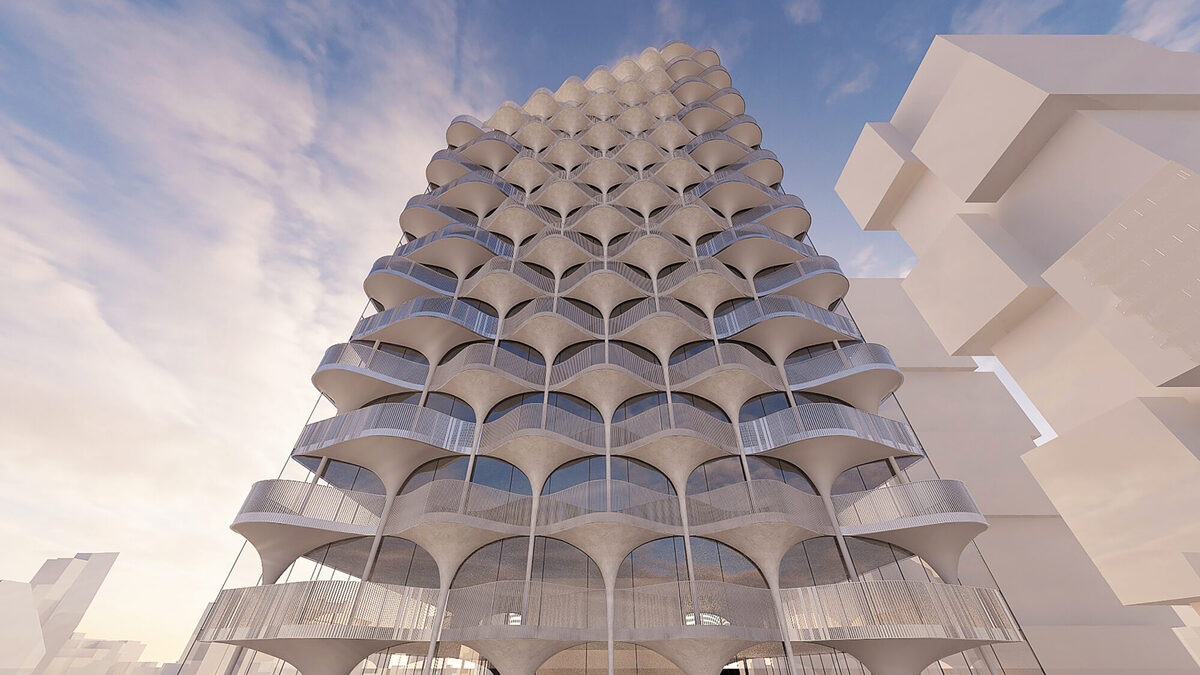
At ACDF, an Architecture Firms in Canada, their aspiration is unwavering: to balance responsibility with innovation, vision with generosity, ultimately weaving beauty into every endeavor. While good design captivates the mind, great design does more; it touches the soul.
Led by Maxime-Alexis Frappier, Joan Renaud, and Etienne Laplante Courchesne, their 95-person team thrives on expertise and a zest for life. ACDF’s goal is to deliver meticulously tailored, design-forward projects across all scales and typologies. Within ACDF’s architectural studio, they find inspiration in constraints—be it budget, site, or materials—and transform pragmatism into poetry. With their creative fervor and diverse expertise, ACDF crafts compelling spaces where North American pragmatism converges with European flair.
ACDF Architecture’s notable projects include:
Notre-Dame College Gymnasium, Montréal, Canada – Collège Notre-Dame champions a holistic educational philosophy that nurtures the mind, heart, and body of its students, emphasizing the importance of sports and cultural activities in their daily lives. With an expanding student body, maintaining this focus became challenging. The construction of a new athletic and cultural center presented an opportunity to enhance the school’s offerings. Strategically situated at the heart of the campus, the new facility serves as a hub for various physical and cultural endeavors, aligning with the college’s educational vision.
Lightspeed Offices Phase 3, Montréal, Canada – With their Montreal headquarters quickly expanding, Lightspeed POS sought to optimize space utilization by converting the underutilized attic space of the historic Gare Viger into functional areas for training, meetings, and work. This transformation of the 10,000 square feet into dynamic workspaces reflects the firm’s commitment to fostering collaboration and innovation among its growing workforce.
Flighthub, Saint-Laurent, Montréal, Canada – FlightHub, a leading online travel agency, embarked on a renovation of their Montreal head office to accommodate their expanding operations. Inspired by the firm’s core values of technology, travel, and community, the project redesigns the entire 6th floor to create a workspace that embodies the essence of FlightHub’s business while providing a modern and functional environment for its employees.
Barclay Tower, Vancouver, Canada – Situated in Vancouver’s vibrant West End neighborhood, the proposed Barclay Tower by ACDF Architecture presents a striking addition to the city skyline. With its graceful curves and pale exterior, the 48-story tower harmonizes with the urban fabric while offering a sense of tranquility and inclusivity. The design reflects a thoughtful response to Vancouver’s socio-economic context, blending market and social housing units seamlessly.
The Pacific by Grosvenor, Vancouver, Canada – Exuding sophistication and accessibility, The Pacific by Grosvenor epitomizes ACDF’s approach to architecture—responsible and generous. Nestled in Downtown Vancouver, this condominium tower boasts a modernist design that integrates seamlessly into its surroundings. Striking a balance between elegance and practicality, The Pacific stands as a visual landmark, embodying a mindful approach to urban living.
3. MGA | MICHAEL GREEN ARCHITECTURE
Number of A+Awards Winners: 5
Number of A+Awards Finalists: 5
Featured Projects: 12
Total Projects: 22
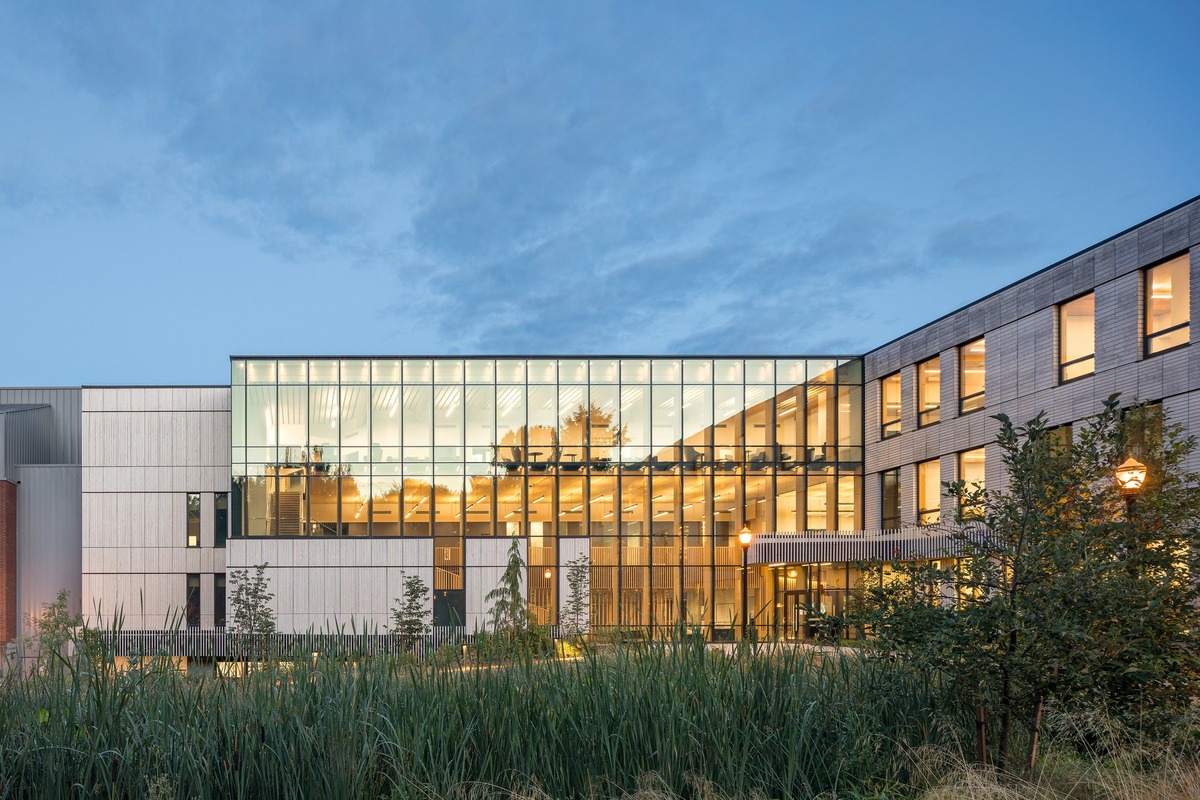
MGA | MICHAEL GREEN ARCHITECTURE, an Architecture Firms in Canada, stands as a premier Canadian architectural firm, acclaimed internationally. Notable for receiving four Governor General’s Medals for Architecture and two Royal Architectural Institute of Canada Awards for Architectural Innovation, their reputation extends to pioneering sustainable architecture and crafting carbon-neutral structures through advanced wood construction techniques.
Based in Vancouver, MGA thrives as a mid-sized firm, cherishing our roots in this vibrant city. MGA’s adept and seasoned team handles a spectrum of projects, spanning from intimate boutique interiors to expansive institutional edifices, both locally and globally. Within MGA studio, they integrate various disciplines including architecture, interior design, graphic design, landscape architecture, and model making. Founded on a passion-driven ethos, our firm relentlessly pursues projects that resonate with their core values.
Key projects by MGA | MICHAEL GREEN ARCHITECTURE encompass:
The Dock Building, Vancouver, Canada – Situated along the bustling marina of Jericho Beach in Vancouver, Canada, The Dock Building caters to the needs of a vibrant sailing community. Offering essential amenities such as washrooms, showers, offices, and instructional spaces for children, as well as workshops for boat maintenance, sails, and gear upkeep, the facility serves as a hub for maritime activities. Despite modest budget constraints and a prime waterfront location steeped in industrial heritage, the project’s design pays homage to the area’s historical waterfront structures. Comprising two intersecting wedge volumes, the building forms a beacon both to the sea and the land, with a glulam and translucent polycarbonate wall facing inland, illuminating the workshop areas and casting a gentle glow along the shoreline after dusk.
Oregon State University Forest Science Complex, Corvallis, Oregon – MGA recently concluded the construction of two pioneering mass timber buildings as part of the Forest Science Complex (FSC) at Oregon State University. Designed for the College of Forestry, the new Peavy Hall and the AA “Red” Emmerson Advanced Wood Products Laboratory (AWP) exemplify the institution’s commitment to fostering a dynamic learning environment for sustainable forest management. Developed collaboratively with various College departments and user groups, the project integrates cutting-edge research facilities with state-of-the-art teaching spaces, embodying the College’s mission to advance forest ecosystem management practices in the 21st century.
Catalyst Building, Spokane, Washington – As the inaugural office building in Washington State was constructed using cross-laminated timber, the Catalyst Building sets a new standard for sustainable construction. Pursuing Zero Energy and Zero Carbon certification, it aims to become one of North America’s largest buildings to meet both standards. Serving as a living laboratory for sustainability technologies and design innovations, the building integrates advanced materials and construction techniques to minimize environmental impact while maximizing energy efficiency.
T3 Minneapolis, Minneapolis, Minnesota – T3, a groundbreaking mass timber office building in Minneapolis, marks a significant milestone in modern timber construction in the United States. Representing the first completed modern timber building in over a century and the largest of its kind in North America, T3 embodies a fusion of historical warehouse district charm with contemporary design sensibilities. T3 redefines the commercial building landscape by embracing progressive architectural principles while honoring the city’s rich industrial heritage.
4. KPMB Architects
Number of A+Awards Winners: 1
Number of A+Awards Finalists: 4
Featured Projects: 19
Total Projects: 67
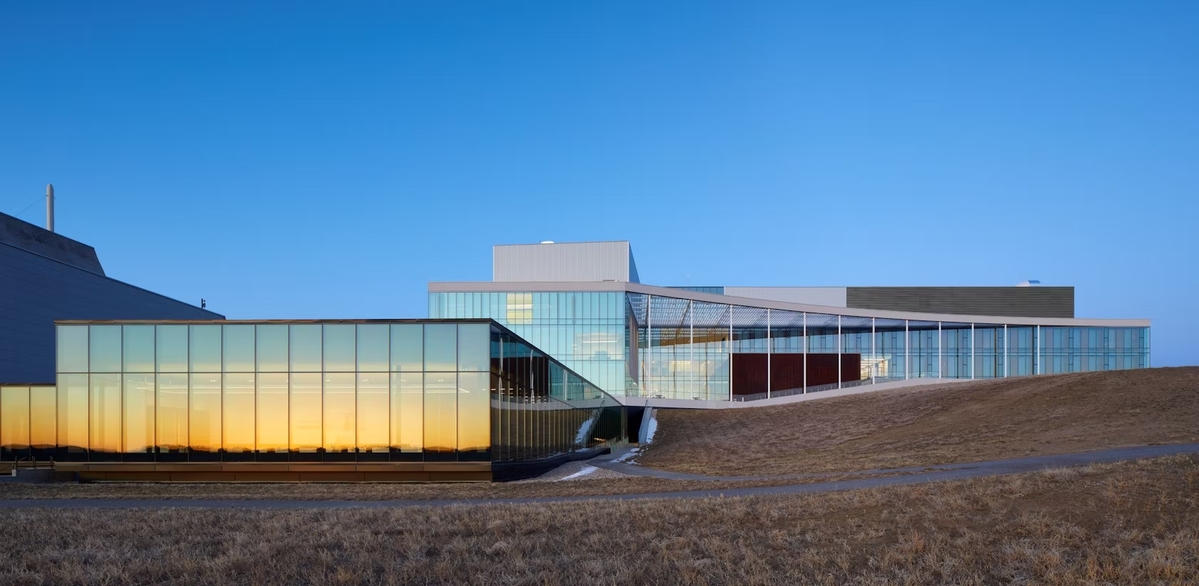
KPMB Architects, an Architecture Firms in Canada, stands as a celebrated, internationally renowned Canadian firm, distinguished for its innovative approach to architecture and practice, tailored to navigate their diverse, ever-evolving global landscape. This ethos is reflected in the breadth of their portfolio, spanning culture, education, healthcare, and groundbreaking climate-responsive design. Each project is conceived with a fundamental belief in architecture’s capacity to shape societal and ethical landscapes positively. Comprising a rich talent pool of skilled individuals, their firm fosters dynamic, integrated design teams, ensuring each solution strikes a harmonious balance between visionary ideals and practicality, environmental stewardship, and architectural distinction.
Key projects by KPMB Architects include:
Boston University, Center for Computing & Data Sciences, Boston, Massachusetts – The Center for Computing & Data Sciences at Boston University stands as a vibrant hub within the university’s central campus, serving as a nexus for innovation and collaboration. Designed to facilitate interaction and connectivity, the building is conceived as a vertical campus, with each element meticulously integrated to establish Data Sciences as the university’s new iconic focal point.
Beaverbrook Art Gallery (Harrison McCain Pavilion), New Brunswick, Canada – Home to a diverse and esteemed art collection since its inception in 1959, the Beaverbrook Art Gallery showcases works by renowned artists such as members of the Group of Seven, Lucian Freud, and Salvador Dalí. With nearly 7,000 multidisciplinary artworks, the gallery continues to enrich the cultural landscape of New Brunswick and beyond.
Isttaniokaksini/Science Commons – University of Lethbridge, Lethbridge, Canada – Inspired by the architectural legacy of Arthur Erickson and the breathtaking coulee landscape, the new Science Commons at the University of Lethbridge fosters an inclusive environment for scientific exploration and discovery. Designed to promote transdisciplinary research and knowledge transfer, the Science Commons serves as a community resource, offering access to research facilities and study spaces for a diverse range of stakeholders.
Downsview, Toronto, Canada – The Downsview Framework Plan, a collaborative effort between SLA, KPMB Architects, Northcrest Developments, and Canada Lands Company, reimagines the future of Toronto’s North End neighborhood. Encompassing the former Downsview Airport site and surrounding land, the plan envisions a sustainable and resilient community complete with green spaces and amenities, poised to thrive for generations to come.
Wilson School of Design, Kwantlen Polytechnic University, Richmond, Canada – Situated in Richmond, BC, the Wilson School of Design at Kwantlen Polytechnic University aims to become a leading institution for innovation in fashion, graphics, and interior design on the West Coast. Designed to withstand unique site conditions, including a high water table and seismic considerations, the school features a structural approach that prioritizes both lightness and strength, akin to a ship navigating turbulent waters.
5. Lemay – Architecture & Design
Number of A+Awards Winners: 3
Number of A+Awards Finalists: 5
Featured Projects: 10
Total Projects: 37
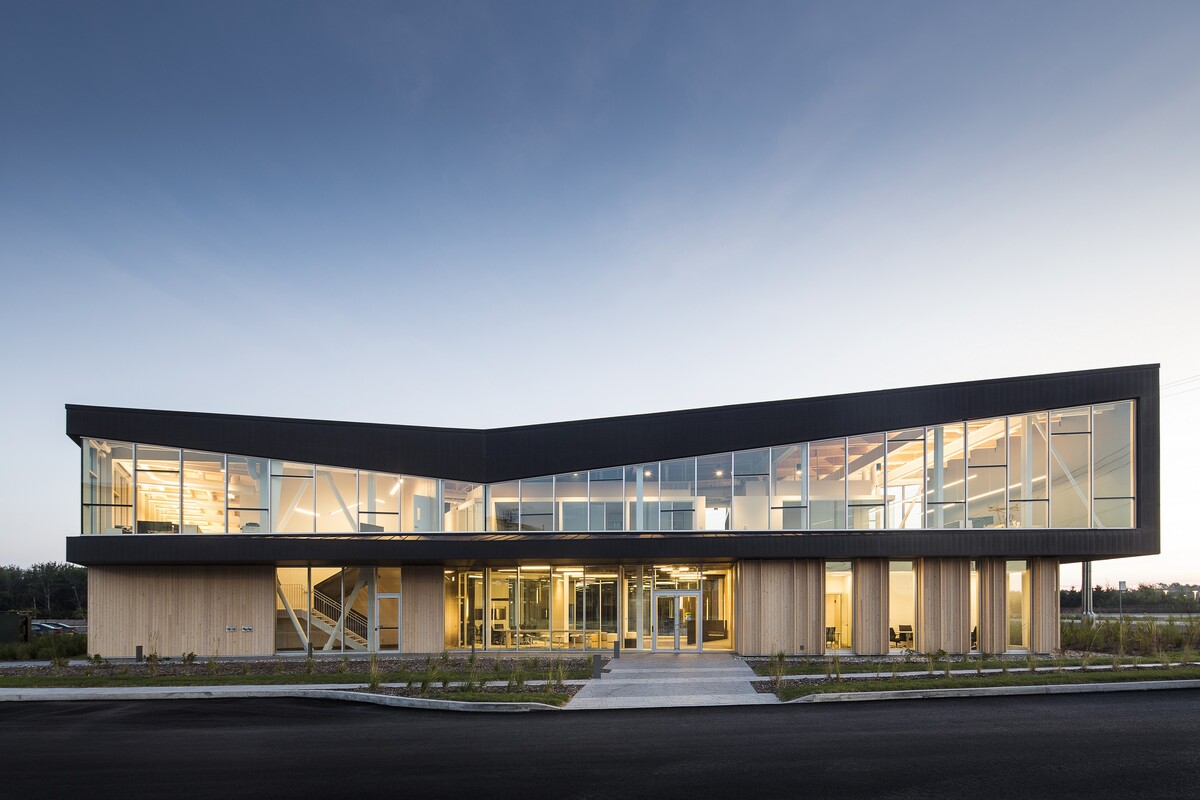
For over six decades, Lemay has been dedicated to crafting spaces that foster growth and community connection. Founded in 1957, their team of over 400 architects, designers, and industry leaders is committed to pushing boundaries and fostering innovation both locally and globally. Anchored in transdisciplinary creativity, they have developed our unique NET POSITIVE™ approach, guiding them towards sustainable solutions that pave the way for a brighter tomorrow. With a deep understanding of the human experience, Lemay designs with empathy, aiming to create environments that nurture personal and collective growth.
Highlighted among Lemay’s notable projects are:
Pomerleau Offices, Levis, Canada – Situated amidst the juxtaposition of a highway and lush woodland in Lévis, Canada, the innovative Pomerleau Offices unfold into three distinct wings. This design choice aims to frame verdant, natural views while fostering cohesiveness among occupants and enclosing an interior courtyard. The elongated, two-level wing prioritizes open-concept workspaces with central closed offices to optimize natural light and showcase captivating forest vistas, promoting employee well-being and productivity. Strategically positioned common areas and coffee stations encourage informal interaction and collaboration throughout the building.
Lumenpulse, Longueuil, Canada – Renowned for its international lighting solutions, Lumenpulse sought to embody its values of innovation, collaboration, communication, and transparency in the design of its innovative head office in Longueuil, Canada. The space is meticulously crafted to inspire creativity and foster collaboration among employees, reflecting the firm’s commitment to sustainability and high-performance LED solutions for diverse environments.
Bellechasse Transport Center, Montréal, Canada – Noteworthy for its refined and curvilinear design, the Bellechasse Transport Center in Montréal minimizes its footprint while promoting practicality and functionality within a densely populated neighborhood. Enhancing the urban context, the center encourages pedestrian activity and exploration while reducing environmental impact, exemplifying thoughtful urban planning and design.
Grand Théatre de Québec, Québec City, Canada – Celebrated for its brutalist architecture and historic mural, the Grand Théâtre de Québec underwent a significant restoration to preserve its architectural integrity. With nearly 60% of its interior covered by the iconic Bonet mural, the restoration efforts focused on protecting the prefabricated concrete walls and anchors, ensuring the preservation of this cultural landmark for future generations.
Place des Montréalaises, Montréal, Canada – Winner of an international design competition, Place des Montréalaises is a poignant public space honoring 21 influential women who have shaped the city. Spanning a sunken expressway that once divided Old Montreal from downtown, the project reconnects these areas with an inclined plane, fostering unity and healing within the urban landscape. Surrounded by historic landmarks and architectural marvels, Place des Montréalaises stands as a testament to the city’s rich heritage and progressive vision for the future.
6. MJMA Architecture & Design
Number of A+Awards Winners: 2
Featured Projects: 13
Total Projects: 34
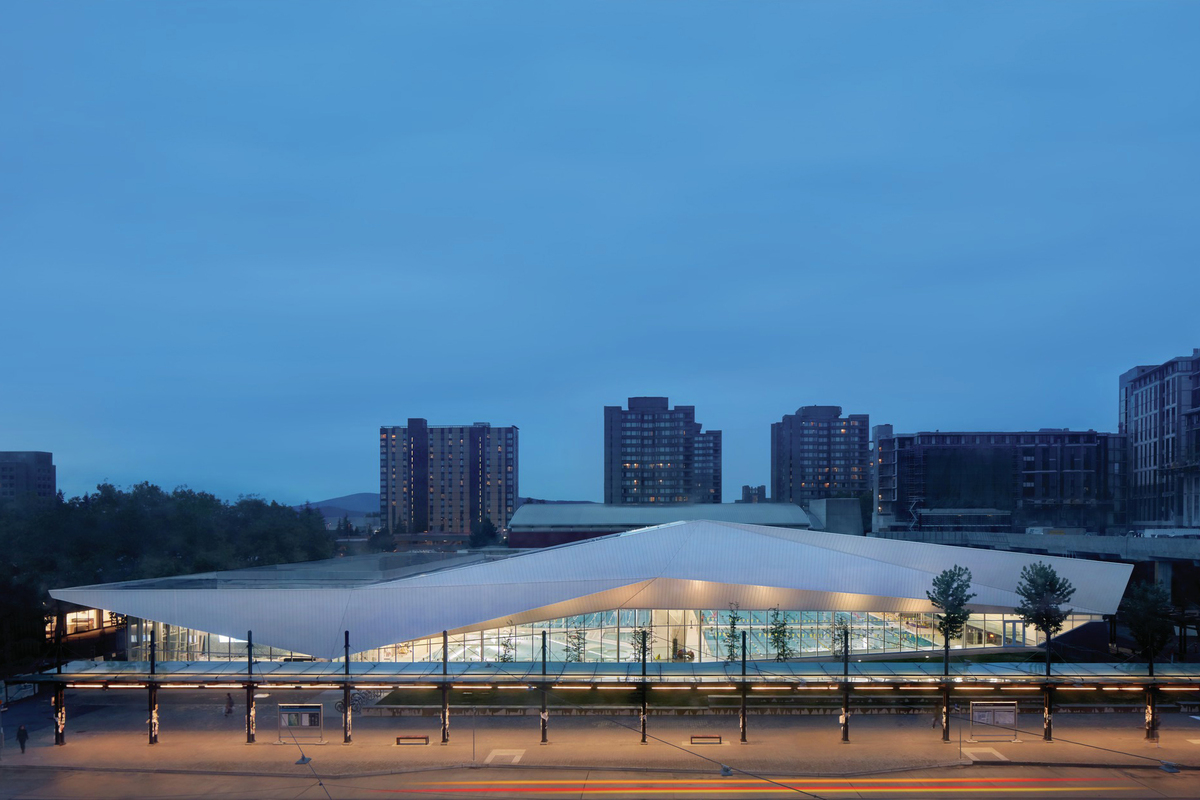
Based in Toronto, Canada, MJMA is a design firm comprised of over 60 talented designers and architects. With a legacy spanning over 30 years, MJMA has transitioned from crafting community buildings to fostering communities themselves—whether in urban centers, educational campuses, corporate settings, or sports arenas. Their expanding portfolio reflects a culture of innovation that permeates every aspect of their work. This commitment to innovation, coupled with collaborations with clients passionate about impactful architecture, has garnered them over 75 national awards.
Highlighted among MJMA Architecture & Design’s significant projects are:
Queen’s University John Deutsch University Centre, Kingston, Canada – Nestled at the heart of Queen’s University, the John Deutsch University Centre is a cherished student hub boasting Collegiate Gothic architecture. Despite its iconic presence, accessibility has been a challenge. To remedy this, a bold addition acts as an inviting armature, guiding visitors through a sequence of accessible, student-centric spaces, ensuring inclusivity and engagement within the historic building.
UBC Aquatic Centre, Vancouver, Canada – The UBC Aquatic Centre faces the dual challenge of training Olympians and serving its community while enhancing the student experience. Amidst UBC’s Olympic legacy and rapid campus growth, the center seeks to balance high-performance training with recreational programming, catering to diverse user groups and fostering excellence in aquatic sports and wellness.
Clear Lake House, Parry Sound, Canada – Commissioned by a Toronto family, the Clear Lake Cottage blends modernity with traditional cottage charm. Embracing simplicity and functionality, the design features a tent-like envelope housing both indoor and outdoor spaces within a vernacular form. Nestled in a forested setting, the cottage harmonizes with its surroundings, offering panoramic views and a serene retreat for extended family gatherings.
Chinguacousy Park Redevelopment, Brampton, Canada – The Chinguacousy Park Redevelopment encompasses a diverse array of recreational facilities, including a Ski Chalet, outdoor volleyball complex, skateboard park, and BMX park. With renovations to the Tennis and Curling Club and a new Boat Pavilion, the project aims to enhance community engagement and connectivity through improved landscaping and pedestrian pathways, creating a vibrant and inclusive park environment.
Commonwealth Community Recreation Centre, Edmonton, Canada – A collaborative endeavor between the City of Edmonton and the Edmonton Eskimos Football Club, the Commonwealth Community Recreation Centre revitalizes a vacant stadium ground into a dynamic urban park and recreation destination. Featuring state-of-the-art facilities, including aquatic halls, a field house, fitness center, and community spaces, the center promotes health, wellness, and community engagement while preserving Edmonton’s sporting heritage.
7. Atelier RZLBD
Featured Projects: 14
Total Projects: 24
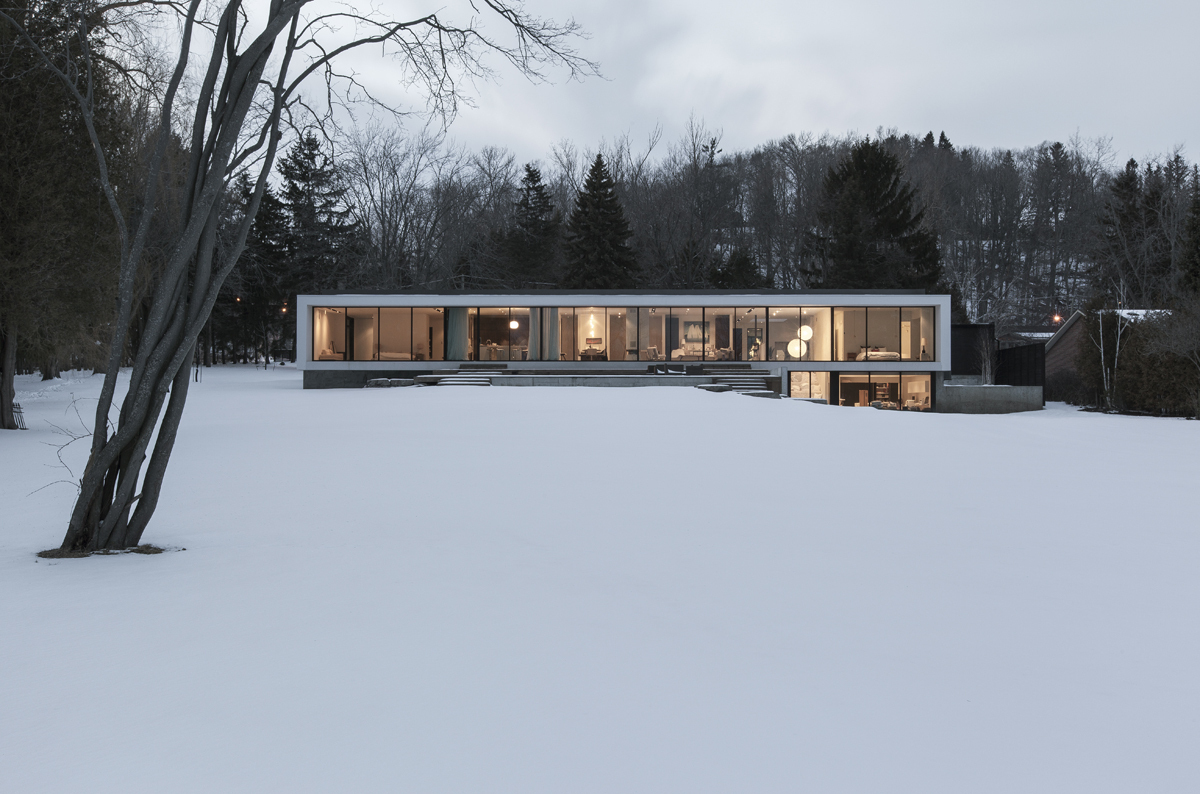
Atelier RZLBD is a unique art and architecture studio located in Toronto, founded by architect Reza Aliabadi (OAA, MRAIC). Our scope encompasses building and object design, curation of installations and exhibitions, and the publication of rzlbdPOST zine.
Atelier RZLBD is more than a conventional practice; akin to a constructive force, they actively engage, communicate, question, and tailor themselves to suit the specific requirements of each project and its surroundings. Atelier RZLBD’s endeavors have garnered multiple awards and have been showcased in various venues.
Key projects by Atelier RZLBD include:
Opposite House, Toronto, Canada – The Opposite House, a bespoke private residence situated on the Scarborough Bluffs near the eastern outskirts of Greater Toronto, embodies modern living tailored to a professional couple with an active home entertainment lifestyle. Designed to anticipate future growth, the dwelling provides ample space and versatility, accommodating the couple’s work-from-home needs and potential family expansion, offering a comprehensive living experience that exceeds expectations.
Shaft House – Embracing the ethos of urban regeneration and aesthetic renewal through cost-effective building methods, Shaft House harmonizes with its surroundings while maintaining a distinct contemporary identity. Seamlessly blending into the neighborhood fabric with thoughtful material choices and construction techniques, the residence represents a delicate balance between traditional and modern architectural sensibilities, redefining the concept of urban dwelling.
5/6 HOUSE – 5/6 House redefines residential living in a city characterized by harsh weather conditions and limited natural light. Maximizing daylight exposure throughout the year, the design leverages a unique modular configuration, reminiscent of a Rubik’s cube, to create bright, open living spaces conducive to well-being and energy efficiency. By optimizing visual communication and natural illumination, 5/6 House sets a new standard for sustainable urban living.
Whale House – A bold spatial experiment by rzlbd, the Whale House epitomizes contemporary design with a monochromatic aesthetic centered around a striking red box symbolizing contemplation within a spacious foyer. Nestled in Toronto’s Woodbine-Lumsden Neighborhood, the narrow lot posed design challenges, resulting in a unique architectural expression reminiscent of the biblical tale of Jonah. Evoking a sense of intrigue and drama, the Whale House stands as a testament to innovative residential design.
The Gallery House, Markham, Canada – Drawing inspiration from commercial and institutional architecture, the Gallery House reimagines residential living with a design centered around a central galleria. Located in Old Thornhill, the residence optimizes natural light and panoramic views while maintaining a functional layout. Stretching along a sloped lot at the end of a cul-de-sac, the Gallery House epitomizes contemporary elegance and spatial efficiency, offering a harmonious blend of form and function in the heart of Markham.
8. Henriquez Partners Architects
Number of A+Awards Winners: 7
Number of A+Awards Finalists: 1
Featured Projects: 9
Total Projects: 12
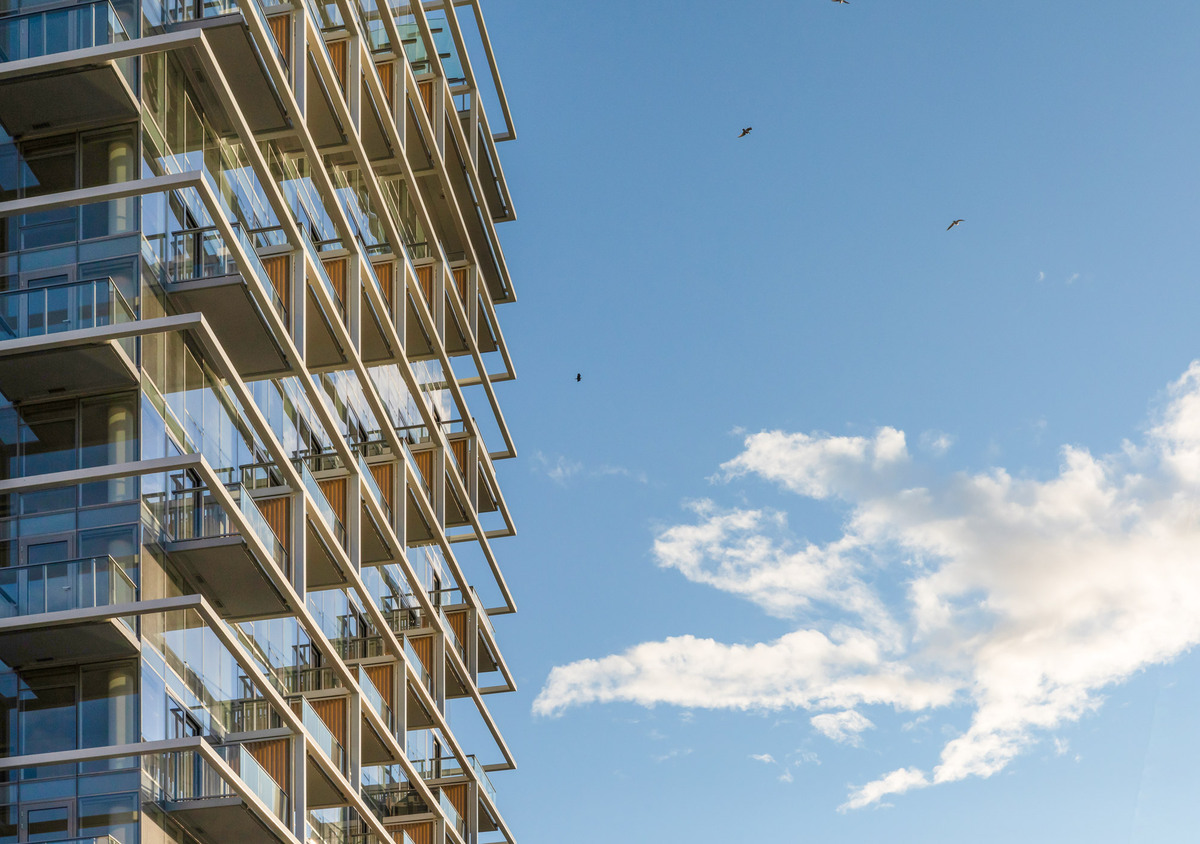
Henriquez Partners Architects is committed to collaborating closely with clients to craft buildings that prioritize cultural, environmental, and economic sustainability. They believe that each project serves as a chance to enhance communities by harmonizing ethics with aesthetics. Guided by this principle and a steadfast dedication to design integrity, they possess the expertise to oversee projects from initial conception to final construction, ensuring the creation of enduring structures. Their buildings have garnered numerous accolades for their design excellence.
Highlighted among Henriquez Partners Architects’s notable projects are:
TELUS Garden Office Tower, Vancouver, Canada – The TELUS Garden development marks a transformative endeavor in downtown Vancouver, rejuvenating an aging city block into a forward-thinking community that seamlessly integrates aesthetics, functionality, and environmental sustainability. At its core, the 22-storey, 450,000-square-foot office tower stands as a testament to technological and environmental innovation, positioning itself as a beacon of commerce, employment, and sustainable living on a global scale.
Prototype (M5), Vancouver, Canada – Drawing inspiration from British Columbia’s natural and artistic heritage, Prototype (M5) emerges as a pioneering net-zero residential tower in Vancouver. As a replicable, open-source prototype and hybrid mass timber case study, it aims to significantly reduce lifecycle carbon emissions while addressing the city’s pressing need for affordable housing, exemplifying a harmonious fusion of sustainability and affordability in urban development.
Pendrell, Vancouver, Canada – Inspired by the modernist design language of Vancouver’s 1960s towers and its coastal context, Pendrell stands as a distinctive residential tower at the gateway to Stanley Park. Providing much-needed purpose-built rental units in the vibrant West End neighborhood, it pays homage to the city’s LGBTQ+ community while enhancing the iconic seawall waterfront with its architectural presence.
Central Presbyterian Church, Vancouver, Canada – A symbol of community vitality, Central Presbyterian Church’s new mixed-use building reflects 90 years of service to Vancouver’s West End. Adorned with a striking façade featuring red, blue, and green crosses, the building creates a dynamic interplay of light and shadow within its sanctuary, embodying a modern interpretation of spiritual expression and architectural innovation.
Cardero, Vancouver, Canada – Positioned as an origami obelisk at the crossroads of Vancouver’s urban grids, Cardero serves as a gateway between the city’s North Shore and Downtown core. Embracing its unique location near Coal Harbour waterfront, the project fosters connectivity to Vancouver’s key districts while embracing its role as a transitional landmark, seamlessly blending into the cityscape with contemporary elegance and urban sophistication.
9. Hariri Pontarini Architects
Number of A+Awards Winners: 5
Number of A+Awards Finalists: 3
Featured Projects: 8
Total Projects: 19
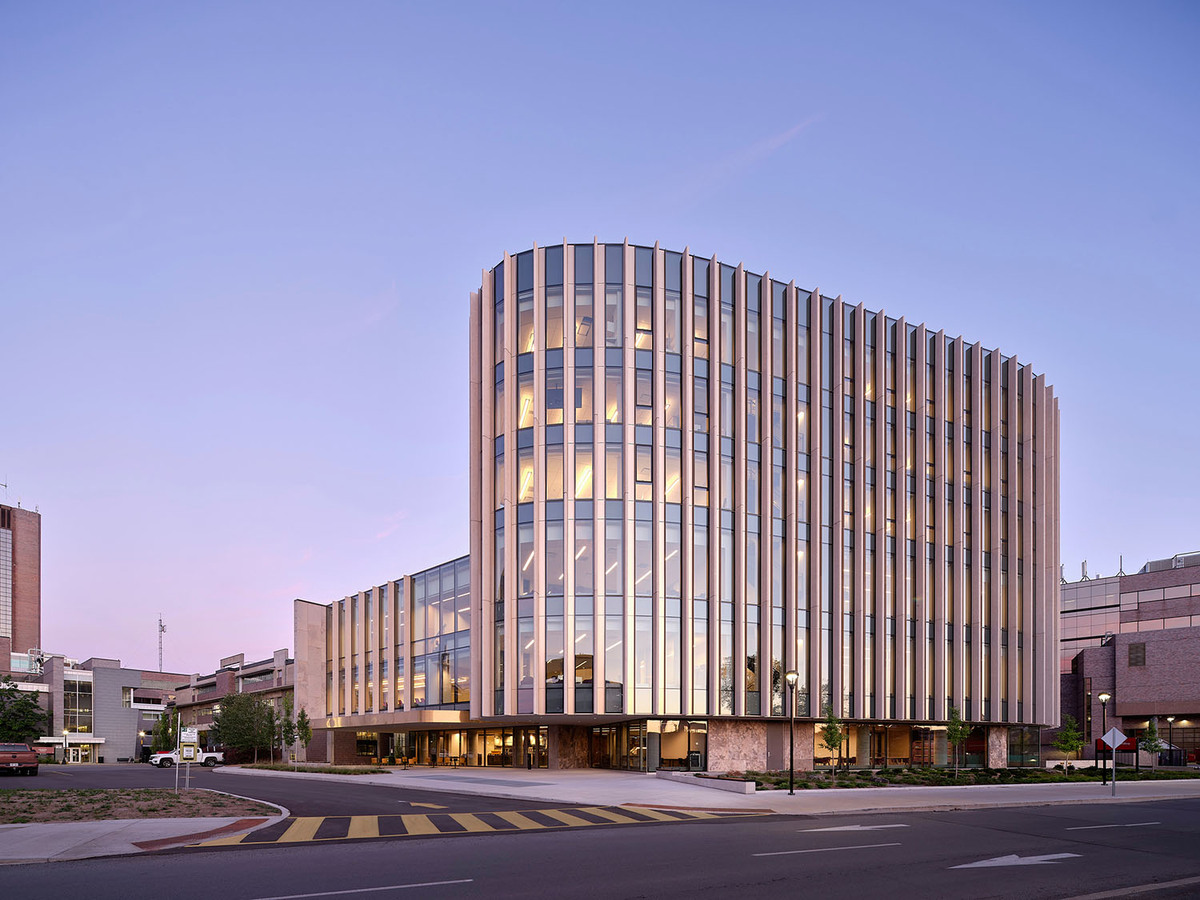
Established in 1994, Hariri Pontarini Architects is a prominent Canadian architectural firm renowned for its creation of modern landmarks. Notable among their portfolio are the award-winning Bahá’í Temple for South America, the acclaimed McKinsey & Company headquarters in Toronto, the internationally recognized Ivey School of Business, and the Governor General’s Medal-winning Schulich School of Business.
Founded by Siamak Hariri and David Pontarini, the firm has garnered recognition for its diverse array of institutional, commercial, and residential projects, including libraries, schools, and academic buildings. Hariri Pontarini Architects is distinguished by its commitment to delivering projects of exceptional quality, rooted in a strong conceptual framework tailored to the unique needs and aspirations of each client.
Highlighted among Hariri Pontarini Architects’s prominent projects are:
7 St. Thomas, Toronto, Canada – In a symphony of architectural finesse, 7 St. Thomas seamlessly marries retail and commercial design, weaving together Victorian charm with contemporary flair. This innovative project integrates six heritage townhouses into a graceful three-story podium, crowned by a sinuous six-story tower. With retail spaces at street level and condominium offices above, the development achieves a delicate balance of high design, environmental consciousness, and civic enhancement, offering a cohesive blend of form and function to the vibrant cityscape of Toronto.
Nicol Building, Sprott School of Business, Ottawa, Canada – The Nicol Building, home to the Sprott School of Business, embodies a vision of innovation, creativity, and social responsibility. Situated at a pivotal site on the university campus, it serves as a natural focal point, intersecting three branches of the school’s tunnel system and bordering Campus Avenue. Beyond being the heart of the Sprott community, it stands as a beacon, attracting top-tier students and faculty while fostering a dynamic hub for the broader Carleton community.
The Bahá’í Temple of South America, Santiago, Chile – Inspired by the interplay of light and spirituality, the Bahá’í Temple of South America stands as a testament to inclusivity and unity. Nestled in the foothills of the Andes near Santiago, Chile, this architectural marvel draws inspiration from diverse sources, including the play of sunlight through tree canopies and the intricate patterns of Japanese bamboo baskets. Through meticulous design and digital technology, the temple embodies a universal welcome, inviting people of all faiths and cultures to gather and reflect.
Ontario’s Celebration Zone, Toronto, Canada – Ontario’s Celebration Zone, a testament to creativity and logistical prowess, was conceived to host a myriad of events during the 2015 Pan Am/Parapan Am Games. Erected within a tight timeframe at Toronto’s Harbourfront Centre, this temporary venue showcased over 500 events, including concerts and activities, demonstrating the power of design and organization to bring communities together in celebration.
Tom Patterson Theatre – The new Tom Patterson Theatre is more than a performance venue; it is a captivating centerpiece designed to draw visitors to Stratford. Adorned with a shimmering bronze veil that evokes warmth and elegance, the theater promises a sensory journey both inside and out. Its curvilinear design creates intimate spaces for reflection and connection, offering visitors a tranquil oasis amidst the excitement of theatrical experiences.
10. Akb Architects
Number of A+Awards Winners: 1
Number of A+Awards Finalists: 3
Featured Projects: 12
Total Projects: 16
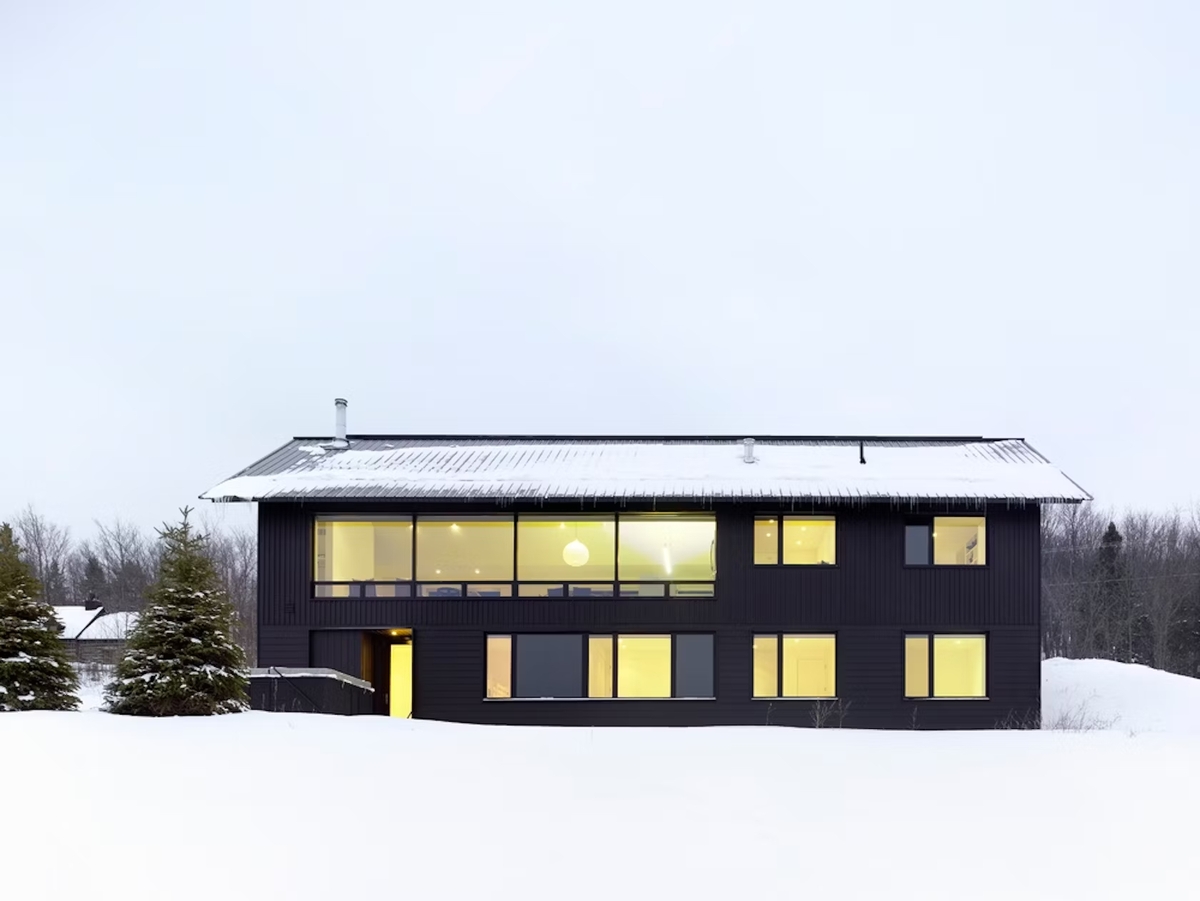
Established in 2004, Akb Architects is a Toronto-based architectural firm founded by Robert Kastelic and Kelly Buffey, passionate architects committed to the craft of construction. Central to Akb’s design philosophy is the pursuit of capturing the poetic essence of space, evident in their meticulous design process characterized by clarity of vision, meticulous attention to detail, and a steadfast dedication to conceptual integrity. Leveraging their extensive background in both architecture and interior design, Robert and Kelly employ a comprehensive approach that yields buildings of exceptional precision and sophistication.
Akb Architects adopts a holistic approach that seamlessly integrates interior and exterior spaces, blurring the boundaries between building and landscape to create a unified experience. Elements such as volume, light, proportion, and materiality are orchestrated to harmonize with each project’s unique site, context, and programmatic requirements.
Key projects by Akb Architects include:
Story Pod, Newmarket, Canada – Nestled in the heart of Newmarket’s historic downtown core, the Story Pod stands as a testament to community collaboration and innovation. Serving as a lending library, this contemporary structure enriches the civic square with its striking design and vibrant energy, inviting residents to come together and exchange ideas.
Conceived through a partnership between the Town of Newmarket and local business HollisWealth, the Story Pod embodies the spirit of sharing and inclusivity. With initial book supplies provided by Scholastic and the Newmarket Public Library, it offers a mobile platform for literacy and community engagement, symbolizing the town’s commitment to fostering connections through literature.
Metrick Cottage and Boathouse, Ontario, Canada – Perched on the serene shores of Lake Joseph, Metrick Cottage and Boathouse epitomizes the essence of lakeside living. Designed as a retreat for a multigenerational family, this wood-clad residence harmonizes with its natural surroundings, blending elegance with eco-consciousness.
Comprising interconnected “pods,” the cottage offers a seamless flow between communal and private spaces, each strategically oriented to maximize views and privacy. Positioned amidst the rugged landscape, it creates a tranquil haven where the family gathers to embrace the beauty of nature and create lasting memories.
Whistling Wind Cottage, Pointe au Baril, Canada – Embracing the untamed beauty of Pointe au Baril’s archipelago, Whistling Wind Cottage stands as a testament to the elemental forces of wind and water. Set upon an island of exposed bedrock, its asymmetrical rooflines echo the surrounding landscape, offering panoramic views of the Georgian Bay.
Inspired by the surrounding chain of islands, this collection of buildings reflects the raw beauty of the Canadian wilderness, creating a serene retreat where the rhythm of the wind and the lapping of waves provide the soundtrack to island living.
Muskoka Cottage, Canada – Nestled within the lush landscape of northern Ontario, Muskoka Cottage marries rustic charm with contemporary design to create a tranquil retreat for family and friends. Positioned to capture sweeping views of a freshwater lake, this minimalist sanctuary celebrates the natural beauty of its surroundings.
With its understated elegance and seamless integration into the landscape, Muskoka Cottage offers a serene escape from the bustle of everyday life, inviting residents to reconnect with nature and each other in a space that feels both timeless and modern.
Clearview Chalet, Collingwood, Canada – Perched atop a gently sloping hillside, Clearview Chalet epitomizes simplicity and functionality. Designed to blend seamlessly with its natural surroundings, this chalet embraces a minimalist aesthetic while prioritizing practicality and efficiency.
Clad in board and batten with a low-pitched metal roof, the chalet exudes a sense of understated elegance, offering a cozy retreat amidst the snow-covered landscape. With its panoramic views of Nottawasaga Bay, Clearview Chalet is a sanctuary where relaxation and tranquility reign supreme.
Conclusion
In the realm of Canadian architecture, a diverse tapestry of talent and innovation flourishes, each firm contributing its unique vision and expertise to shape the built environment. From the cozy studios of Omar Gandhi Architects to the bustling creativity of ACDF Architecture, from the pioneering sustainability of MGA | Michael Green Architecture to the poetic precision of Akb Architects, the landscape of Canadian design is rich and multifaceted.
As we reflect on the accomplishments of these esteemed firms, it becomes evident that the future holds boundless potential for further exploration and advancement. With a collective commitment to excellence, sustainability, and community engagement, these architects are poised to continue pushing the boundaries of design, both locally and globally.
Looking ahead, we anticipate a continued emphasis on innovation, fueled by a passion for creating spaces that not only inspire but also uplift the human spirit. As technologies evolve and societal needs shift, Canadian architects will undoubtedly rise to the challenge, leveraging their creativity and ingenuity to address complex challenges and create solutions that resonate with the diverse communities they serve.
Moreover, with a growing awareness of the importance of sustainability and environmental stewardship, we can expect to see an increased emphasis on carbon-neutral design and the integration of green technologies. As climate change continues to shape our world, architects will play a pivotal role in envisioning and creating resilient, adaptive built environments that can withstand the challenges of the future.
In essence, the future of Canadian architecture is bright, fueled by a spirit of innovation, collaboration, and a deep-seated commitment to shaping a better world through design. As these visionary firms continue to lead the way, we can look forward to a built environment that not only reflects our values and aspirations but also serves as a testament to the transformative power of architecture.
Suggested article for reading:
Artificial Intelligence or AI in Architecture; Guide to 2024
The 18 Best AI Architecture Generators of 2024
The Role of Architecture in the Metaverse; Comprehensive Guide 2024
Resources:
Archiobjects | Architizer | ARCHIVIBE | Avontuura | Archgyan | Rethinking the future
For all the pictures: Freepik | ACDF Architecture | Archdaily | Architizer | Archello | Architect Magazine | Henriquez Partners Architects | The Plan

